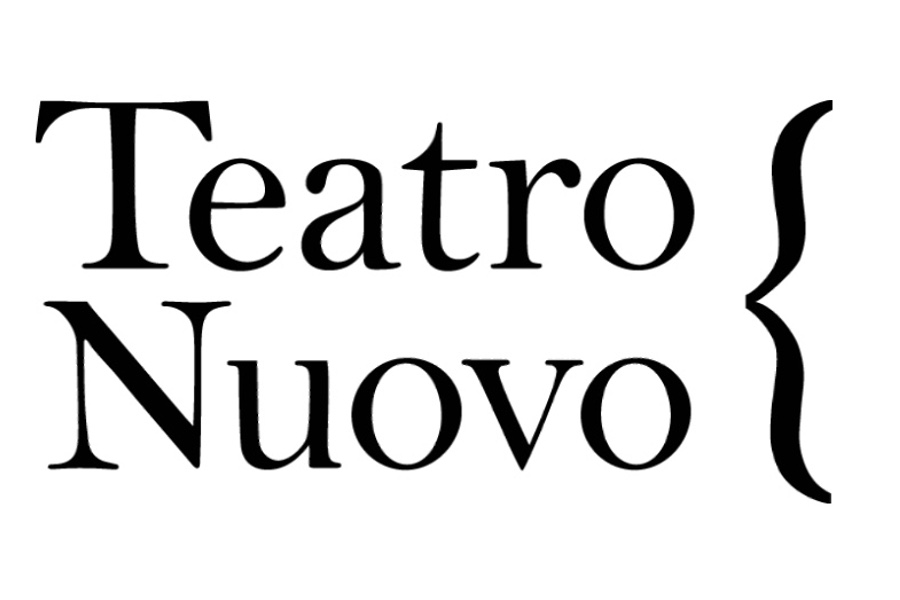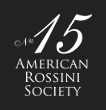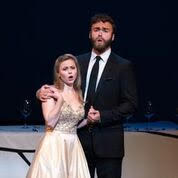Teatro Nuovo’s Way With Bel Canto: Bellini’s Stranger and Rossini’s Magpie

Thank you Charles Jernigan for allowing us to share this review!
Bellini’s La Straniera (The Stranger) July 13, 2019
Rossini’s La gazza ladra (The Thieving Magpie) July 14, 2019
Teatro Nuovo at Purchase College, New York
Last year, conductor/teacher/impresario Will Crutchfield introduced a new enterprise in his long history with bel canto opera. He called it “Teatro Nuovo”—the “New Theater,” and its noble intent was (and remains) an American training ground for historic performance practices in the operatic bel canto repertory. Using period instruments, the orchestra (about 50 players) learned to collaborate with the singers onstage and to perform without a conductor, instead using as leaders the First Violin (also called the Head of the Orchestra) and the maestro al cembalo, the “maestro at the keyboard.” The latter role was usually assumed by the composer himself at the opening performances of a new opera. The arrangement of the instrumentalists is also “nuovo” for our time, but in accord with the way it was in the early nineteenth century (the primo ottocento of Rossini, Bellini, Donizetti and their fellows). Thus, “communication between the singers and the orchestra” becomes very important, and the new playing techniques mean that “vibrato is used as an ornament, not continuously; there is abundant portamento in emulation of the singing voice; tempo rubato becomes the norm; instrumental lines are decorated with the vocabulary of ornamentation that every musician knew at the time.”
This year’s choice of operas fell on Rossini’s magnificent opera semi-seria La gazza ladra (The Thieving Magpie) of 1817 and Bellini’s rarely done La straniera (The Stranger) of 1829. The semi-staged performances took place at Purchase on July 13 (Straniera) and 14 (Gazza ladra), and will move the following weekend to performances at the Rose Theater in Manhattan.
If I had to nominate one of Rossini’s lesser performed operas for the standard repertory, to stand alongside the Bohèmes, the Carmens and the Barbieres, it would be La gazza ladra.
If I had to nominate one of Rossini’s lesser performed operas for the standard repertory, to stand alongside the Bohèmes, the Carmens and the Barbieres, it would be La gazza ladra. Not only is the opera a major stepping stone from the world of opera seria with its gods, goddesses and/or royals to the world of domestic tragedy which will dominate nineteenth century Italian opera, it is filled with much of the very best music Rossini ever composed. It is a long opera, lasting around four hours if performed uncut with one intermission, and it has a large cast (13), most of whom get at least one aria and all of whom participate in numerous ensembles.
The libretto by Giovanni Gherardini is based on a French play, La Pie Voleuse by d’Aubigny and Caigniez, itself based on a real incident—a peasant girl who was wrongly accused of theft and executed. In the folklore that evolved from the incident, the real culprit was discovered to be a magpie which had stolen some silverware, and the French village where the tragedy took place for years afterwards celebrated a “Magpie Mass” in honor of the victim. In the opera, the true thief is discovered in the nick of time, and the heroine, Ninetta, is freed from the gallows and united with her fiancé and father. The story has a military background since both the tenor-fiancé, Gianetto, and Ninetta’s father Fernando are soldiers; Gianetto is returning from active duty as the opera opens and Fernando is AWOL after getting into a fight with his commanding officer when the latter won’t give him temporary leave to visit his daughter. Rossini highlights the military background at the very beginning of the famous overture with drum rolls on stereophonic snare drums, followed by a march.
Thus the opera’s plot revolves around two ordinary peasant victims of an overweening legal system which exploits the poor and downtrodden, and it makes a very firm statement in soliciting our sympathy for the simple soldier father and his servant daughter. The villain in the piece is the town mayor (the Podestà) who has sexual designs on Ninetta, and who is willing to save her if she will yield to him. If this were opera buffa, he would be a comic bass, but here he is a vicious, calculating figure whom we recognize all too well among our own Weinsteins, Epsteins and Trumps. Rossini and Gherardini clearly show what the powerless poor are up against by giving us an extended scene with Ninetta in prison (a common trope in opera seria and semi-seria); for this Rossini composed some of his most memorable duets (for Gianetto and Ninetta and for Ninetta and her friend Pippo, as well as the Podestà and Ninetta) and a trial scene worthy of the most notable opera seria—not to mention a huge funeral march which is the direct inspiration for the famous funeral march in Chopin’s Second Piano Sonata. Some critics have accused Rossini of writing music which is too elevated and serious for two peasants under threat, but that is just the point. In the end, the rescue of both father and daughter comes thanks to the edicts of an all-seeing king, a deus ex machina ending right out of eighteenth century opera seria. In La gazza ladra, Rossini has turned the village characters and milieu of comic opera into tragedy (or near tragedy) and thus forever changed Italian opera to a world of common folk who suffer domestic tragedy, often at the hands of aristocrats—the Luisa Millers, Violetta Valerys, Rigolettos and Gildas, Santuzzas, Mimis and Manons.
Although no stage director was credited for the Teatro Nuovo performance, it was almost a fully realized, staged version and not just a concert. There were no costumes and there were minimal props, but there was continuous action, and only the chorus members carried scores. The new (“nuovo”) placement and techniques of the orchestra, under “primo violino e capo d’orchestra” Jakob Lehmann and maestro al cembalo Rachelle Jonck, seemed less of a contributor to the evening’s success than I remember from last year’s Tancredi and Medea in Corinto. That is, it seemed to me that the collaborative effort between singers and pit was less important, and the performance seemed more traditional and conductor-led (especially by Ms. Jonck). The sound of the early instruments is more “ruvido” (if I may use the Italian word, which also sometimes applies to music, and means “rough,” but not in a pejorative way) and often more exciting than it would be played on modern instruments. The overture (which has never left the repertory) lacked that last spark of brio which makes Rossini so exciting, but with the entrance of the opening chorus, the pace and excitement never flagged, whether in the grand ensembles for which Rossini is so famous, or in the contemplative arias and duets. In the end, it was a wonderful evening from both the orchestra and the 23 person chorus, and the four hours flew by.
The young cast sang and acted like practiced professionals. I was most impressed by mezzo Hannah Ludwig in the pants role of Pippo, Ninetta’s BFF; she possesses a rich voice with depth after depth and exciting low and high notes. She was also the most animated singer on stage. Equally impressive was Oliver Sewell as Gianetto. His dulcet tenor is perfect for Rossini, and he navigated the coloratura of his big entrance aria “Vieni, fra queste braccia” and its attendant cabaletta “Ma quel placer adesso” without any problem, high notes firm and perfectly placed. Alisa Jordheim, our pretty Ninetta, also had no trouble whatsoever with the ornamentation or being heard over the chorus and orchestra. She has a pleasant voice, but sometimes I wondered if it was a little light for the role; no doubt her soubrettish sound will mature, and her fine coloratura will stand her in good stead. Bass-baritone Erik van Heyningen was a splendid Fernando, Ninetta’s father. He carried his weight in the Act I duet with Ninetta and the subsequent trio and in the great aria in Act II, “Accusata di furto.” (Teatro Nuovo had regaled us with the three alternate arias which Rossini wrote for Fernando at a pre-opera concert, as well as an alternative aria for Pippo.)
During the first act, I felt that the only principal who did not fully measure up was Hans Tashjian as Il Podestà; at the intermission it was announced that Mr. Tashjian had been suffering from a bad cold and could not continue. His role was substituted by his cover, Vincent Grana, who acquitted himself quite well in his big second act aria with chorus “Sì, per voi, pupille amate.” Grana acted the role and sang without a score in hand, and earned the vigorous applause of the orchestra (as well as the audience). I thought that the necessary substitution was testament to the depth of the Teatro Nuovo program. Everyone else was fine, especially Allison Gish as Lucia, Gianetto’s mother, who gets her own aria di sorbetto in Act II. Christopher Hochstuhl played the coy gazza in a velvet opera cape. Spencer Viator sang the little arietta of the pedlar Isacco without resorting to caricature, and Rob McGinness, Samuel Ferreira, Jacob Wright, Daniel Fridley and Peter Warren all took minor roles with aplomb.
The audience was smallish, perhaps because of the difficult-to-locate venue or the odd performance time—4:30 to 8:30, late for a matinee and early for an evening performance, and cutting right across the dinner hour. Nonetheless, those who were there realized that they had witnessed something special, and gave the company a rousing standing ovation.


